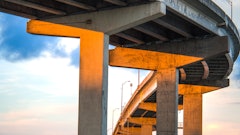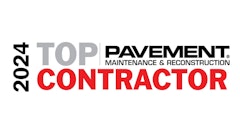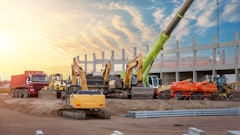
The most recent Construction Financial Management Association (CFMA) survey shows a shift from 2023’s pessimistic construction outlook (an index of 96 ended the year) to a more optimistic future (an index of 109 in March).
The shift in outlook stems from the events of 2023, marked by soaring interest rates, bank collapses, and project delays. However, today, construction controllers, CFOs, and financial officers anticipate a different landscape: diminishing interest rates, stabilized material costs, and a surge in infrastructure opportunities. Despite the persistently high inflation that has prevented interest rate decreases thus far in 2024, there remains an expectation for a gradual decline in the latter half of the year. Much of this optimism is related to federal legislation passed over the last few years that is now starting to impact the construction industry. To note, as of May this year, we are still waiting for interest rates to drop.
Positive Impact of Federal Legislation
Construction in manufacturing has continued to grow over the last three years, boosted by the Infrastructure and Jobs Act (IIJA), commonly known as the Bipartisan Infrastructure Law. Signed into law in 2021, the initiative supports more than $3.1 billion in funding to make more batteries and components in America. These infrastructure investments support the construction of new, expanded and retrofitted commercial facilities. Construction in this area of manufacturing continues to increase as the global lithium-ion battery market grows along with EV sales.
The IIJA has also had an impact on highway and street construction and other infrastructure improvements. In a recent IIJA update, the White House reported in the last three years, the economy added 670,000 jobs in construction – an average of 20,000 per month. The subsectors of heavy and civil engineering and construction of buildings are seeing much faster growth than pre-pandemic years, with employment jumping in highway, street and bridge construction, as well as nonresidential building construction.
We’re also seeing expansion of facility construction associated with data centers, AI and computer chips. The CHIPS and Science Act of 2022 has benefitted manufacturing construction as facilities are built to bring semiconductor supply chains back to U.S. soil. Under CHIPS, more than $39 billion has been set aside for financial assistance in building, expanding and modernizing manufacturing facilities.
The power industry also represents a significant area of construction growth with an influx of money to fund solar and on-shore wind generation, geo-dependent transmission lines, and utility-scale batteries to store power. The IIJA’s Grid Resilience Innovation Partnership (GRIP) program and the Transmission Facilitation Program represent the largest single direct investment in critical transmission and distribution infrastructure.
The Inflation Reduction Act (IRA) is the largest investment in clean energy in U.S. history. The IRA allocates $369 billion in investment in energy security and climate change, and includes $10 billion in tax credits to build clean technology manufacturing facilities and $20 billion in loans to build new clean vehicle manufacturing facilities. While the IRA passed two years ago, implementation details have rolled out slowly, including information specific to the tax credits associated with renewable energy projects. The IRA represents tremendous opportunity for a variety of organizations, including multifamily buildings, higher ed institutions and health care organizations like hospitals. This results in opportunities for the construction field. For example, Section 179D Energy Efficient Commercial Buildings Tax Deduction and the Section 48 Energy Credit provisions offer incentives for the construction of energy-efficient commercial buildings. IRA credits can also be applied to single family and manufactured homes with Section 45L, allowing up to $5,000 per dwelling, impacting opportunities for smaller construction companies.
Persistent Industry Challenges
Recent legislation may have softened some of the challenges in the construction industry, but they have not completely removed them. Labor shortages, risk management and overall economic uncertainty continue to affect the field.
Wage pressure remains a factor, as construction wages have increased at a slower pace than the rest of productivity. Between the years of 2020 and 2023, construction wages in the U.S. rose by 17.2%, a rate trailing behind the overall increase in labor costs. The construction wage premium, currently at 18.47% as of February this year, has dipped below the historical average of approximately 20%. Attracting, developing, and retaining talent continues to undermine the construction industry as the skilled workforce ages and retires, and younger workers don’t always express the same level of interest in careers in the trades. The Bureau of Labor Statistics reports construction job openings continue to outpace new hires in the construction industry. The data considers carpenters, construction laborers, construction managers, electricians, operating engineers and other construction equipment operators. When 2023 closed out, the Construction Labor Gap averaged more than 400,000 construction job openings compared to 350,000 construction hires.
Risk management is also a factor to consider, particularly with the rising cost and limitations of insurance coverage associated with extreme weather events and climate change, and ever-changing regulatory requirements. Captive insurance is one way construction business owners can insure their risks using more comprehensive coverage to mitigate the potential for serious financial and operational losses. Captives can help lower costs while providing significant tax advantages and allowing greater control over coverage and claims decisions.
Overall, economic uncertainty continues to plague most U.S. industries, including construction. Many business leaders expected interest rates to start falling this year, but the Federal Reserve has not budged at the time of this article. Persistent inflation also remains a concern as it increases the costs of building materials and hiring rates for machinery. These factors, along with lagging payment terms and an election year, create uncertainty in the field.
On the bright side, supply chain issues appear to have stabilized compared to the height of the pandemic. The Federal Reserve Bank of New York’s Global Supply Chain Pressure Index was hovering around zero at the start of this year, falling to -0.27 in March, compared to more than 4.00 in November of 2021. To note, a value of zero represents an average value, while a positive value indicates the supply chain is under pressure. Quite simply, a value of zero or below is a good thing for the construction industry. The main factors creating supply chain pressure include logistics and transportation delays, supply chain disruptions (i.e., COVID-19 pandemic), inventory management and demand fluctuations. Fortunately, all of these seem to have subsided in the last 18 months.
Planning for Success, Embracing Opportunities
Construction builders and developers have ample opportunities to shape their destiny in the year to come. With a competitive job market, savvy business owners should focus on investing in their most valuable asset, their people. This includes identifying talent, continual training and development (including upskilling to expand employees’ abilities and minimize skill gaps) and retaining their employees with benefits and incentives.
From a cash management perspective, construction business owners who focus on more aggressive billing and collections are more likely to benefit from high yield sweep accounts when their cash is steered into banks or brokerage money markets that can earn ample interest at the close of each business day. Sweep accounts enable savers and investors to earn yields on funds that would otherwise lose value to inflation.
Technology remains a key to success in the construction industry. From autonomous vehicles and robots on jobsites, to the use of drones and real-time digital collaboration, technology is transforming the field. AI has been particularly useful in construction planning and design, project management, resource management and quality control. While larger construction firms are better positioned to adopt new technologies, smaller businesses can also experience incremental change as they streamline their processes.
Finally, the recent surge in federal tax credits, grants, loans and other funding sources cannot be overlooked. We’re experiencing an extraordinary time in U.S. history, and companies that follow prevailing wage and apprenticeship rules stand to gain additional benefits from federal funds. In some cases, contractors can maximize opportunities by building energy efficient buildings, getting tax incentives for each unit and investing in clean energy like geothermal and solar.
Indeed, the construction industry has taken a positive turn in 2024 and faces an exciting future of growth, but contractors, builders and developers need to embrace these opportunities to maximize their chances for success.


























